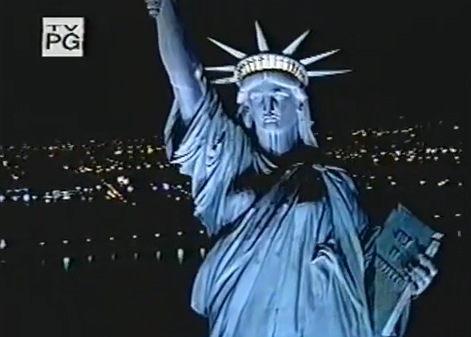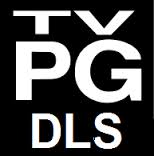Recently, I posted a question on Twitter asking if anyone paid attention to those rating icons that appear on the corner of the screen during TV programs and promos in the United States…and nobody responded. Do you? Do you even know what they all mean? With 44 different icons that are used, the system gets a little confusing.
The TV parental guidelines system was established by the United States Congress and went into effect on January 1, 1997. The ratings were developed after concern about the amount of violence and sex on TV and how easy it was for children to watch. Congress gave broadcasters a year to develop the system under an Act passed in 1996. The ratings were created jointly by the National Association of Broadcasters, The National Cable & Telecommunications Association, and the Motion Picture Association of America. The system was set up similar to the MPAA movie rating system.
Although the rating system is voluntary, most broadcast, cable, and pay TV networks jumped on board. Several online services including Hulu, Netflix, ITunes store, and Google Play also use it.
When first created, all programming was classified under 6 general ratings:
 TV-Y kids programming not expected to frighten young kids.
TV-Y kids programming not expected to frighten young kids.
 TV-Y7 designed for kids 7 and over, more comedic, and may have scenes that could be frightening to youngsters
TV-Y7 designed for kids 7 and over, more comedic, and may have scenes that could be frightening to youngsters
![]() TV-PG may contain scenes that parents will not find suitable for younger children
TV-PG may contain scenes that parents will not find suitable for younger children
 TV-14 not suitable for children under 14 years of age
TV-14 not suitable for children under 14 years of age
![]() TV-MA originally labeled as TV-M, basically sex and violence on TV
TV-MA originally labeled as TV-M, basically sex and violence on TV
A fairly simple system that’s quite easy to understand and something similar is currently in use in Canada and several other foreign countries. But, unfortunately that wasn’t good enough. And in August 1997, the powers that be in our government had to make it harder by adding 5 more subcategories:
D – suggestive dialogue
L – course language
S – sexual content
V- violence
FV – fantasy violence, only used in kids programming
These 5 subcategories appear under the main rating while the icon is displayed on screen. (Only FV is used in kids programming.) While the original system was just fine, the addition of these 5 subcategories makes it confusing to the viewer. Does anybody really understand the difference between “suggestive dialogue” and “sexual content”? Couldn’t they mean the same thing? The system worked just fine with the 6 main categories. They don’t use a ton of subcategories for movie trailers, right?
The guidelines affect all programming except news, sports, and commercials.
While most rating icons are similar in appearance to the original set issued in 1997, some networks have created their own font style, shape, and color although they retain the general feel of what was already established.
THE 411
What: TV parental guidelines ratings system
Debut: January 1, 1997
Number of different rating combinations: 44
JERSEY JOE RECOMMENDS:
The six basic icons are good enough. The six subcategories just add to the confusion. If they were so needed, the MPAA would have required this system to be adapted to feature films shown on the big screen. Even the video game rating system is simpler.
Ask your friends, parents, and neighbors – can anyone fully explain what the meaning of each of these?
Broadcasters also need to be aware of the first few minutes of a show and where appropriate placement on the screen is. There are times, where large icons will cover up the action of a show. There’s enough junk intruding on screen during a show, with the rating, the logo bug, twitter hash tag, and those giant animated lower third promos that overlap everything.
I agree, TV does need a rating system. It’s great that the studios and networks have taken it upon themselves to warn parents about sex and violence that is showing up more and more on the airwaves. While most broadcast networks, generally stay away from TV-MA shows, its good to have a system that will allow parents to block the shows or watch when the kids are away. The system just needs to be simplified. There are 44 different ratings icons in use today, wouldn’t 6 be easier to grasp? Simple is better!
So, do the rating icons affect what you watch?






